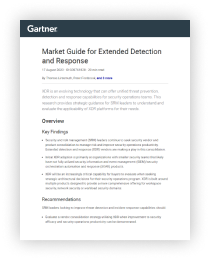What is AI-Native Cybersecurity?
AI’s ability to handle large-scale data analysis and implement real-world recommendations makes it a potentially crucial tool for cybersecurity – particularly in the context of over-stretched security teams and ever-increasing international security threats. However simply bolting AI onto pre-existing security solutions makes it difficult to distinguish precisely what your security team will benefit from, and even harder to visualize GenAI’s genuine potential in the field. AI-based cyber security tooling, however, allows security leaders to explore the potential themselves.
To avoid high-risk hype, start with the bare-bones application security already at your disposal: from there, pinpoint the specific pains plaguing your teams. This way, you’re equipped with the correct framework to delve into GenAI’s potential, without getting carried away by the hype.
This article will give a high-level overview of AI-native cybersecurity approaches, and explain how Stellar Cyber’s Open-XDR provides the next step.

How AI and Machine Learning Improve Enterprise Cybersecurity
Connecting all of the Dots in a Complex Threat Landscape

Experience AI-Powered Security in Action!
Discover Stellar Cyber's cutting-edge AI for instant threat detection and response. Schedule your demo today!
How AI is Being Used by Attackers
Seeing how AI is being leveraged against organizations can give a degree of insight into how your tools need to adapt to retain a protective layer around your employees, databases, and networks.
One of the most self-evident uses of AI in cybersecurity is in the realm of phishing: whereas attack victims were once able to rely on typos and grammatical errors to weed out suspicious messages, this avenue of defense has largely been cut off with the rise of publicly-available generative LLMs, which offer perfect grammar and spelling at no- or low-cost. In turn, security awareness training is battling lower efficiency than ever before. AI models also bolster non-behavioral attack avenues, as they’re able to efficiently create and edit malicious code.
Despite GenAI’s ability to make attacks more efficient, it also provides an avenue for security experts to automate and democratize previously time-consuming tasks.
What Makes AI So Great for Security?
Put simply, AI is uniquely well-positioned to ingest and analyze massive quantities of data. Consider the pre-existing field of threat intelligence: with hundreds of alerts a day, across similarly disparate and far-ranging software and servers, it was once thought impossible to keep an enterprise abreast of such rapid change. This is reflected in the statistics: in 2020 – shortly before the public explosion of AI – it took an average of 34 days for critical patches to be implemented.
Now, however, AI’s ability to ingest such large quantities of data grants organizations a new approach to vulnerability management. With mature threat intelligence automatically implementable, the historic over-reliance on manual investigation, triaging, and security bolstering defenses can be removed, with analysts no longer needing to spend as much time physically combing through logs and installing patches.
How AI is Supercharging Security on the Ground
Machine learning
Natural language processing
Natural language processing, another vital AI component, interprets human language to streamline the analyst experience in task execution and democratize security decision-making across teams. NLP can parse and analyze text from diverse sources, such as threat intelligence reports, social media, and forums, to extract relevant information about potential threats. This capability allows security analysts to quickly understand and respond to emerging threats without manually sifting through vast amounts of data. Additionally, NLP facilitates better communication and decision-making among team members by providing clear, actionable insights derived from complex textual data.
Data mining
Automated decision-making
Bring AI to the Forefront of Your Security Strategy with Stellar Cyber
Cut dwell time from weeks to seconds by aggregating information from all channels of your security stack: Stellar Cyber offers intelligent data management that collates this data into incidents. Not only does this drastically reduce false alarms, but further provides a platform for AI-native cybersecurity growth in the form of our threat intelligence platform. This aggregates all relevant threat intelligence feeds into detected threats, to automatically identify a potential root cause.
Simultaneous to this process is Stellar Cyber’s continuous analysis of your own security landscape. By collecting the telemetry and data from your existing security tech stack, you’re able to make iterative improvements to your current processes, reducing the burden on employees when learning how to use a new tool. Finally – alongside the ability to assess logs, alerts, and authorizations across your tech stack – Stellar is able to respond via those same channels, drastically reducing Mean Time to Response.
Shut down attacks and regain cohesive control of your attack surface with Stellar Cyber – see how you can drive SecOps performance and achieve AI-native cybersecurity today.
